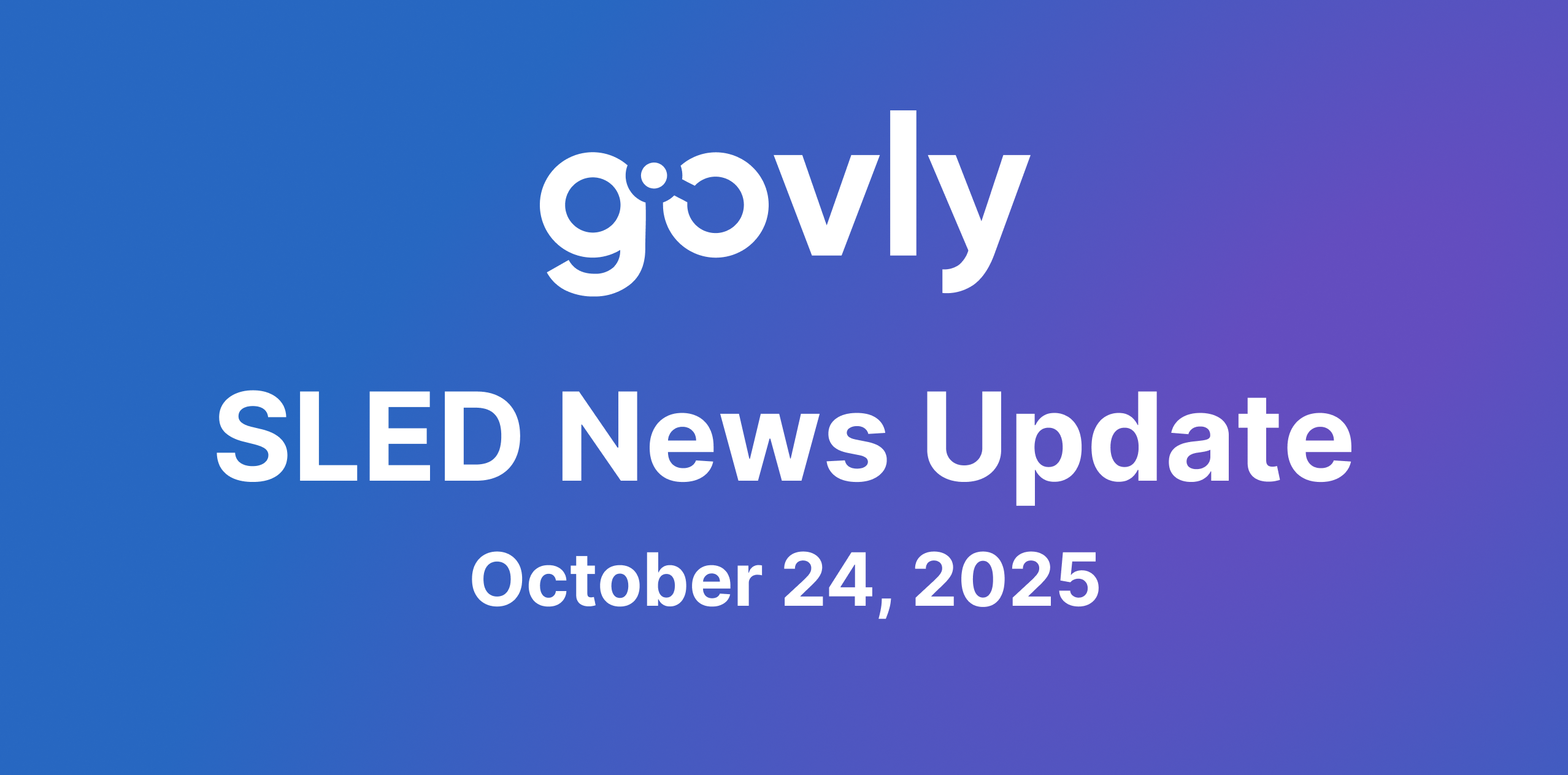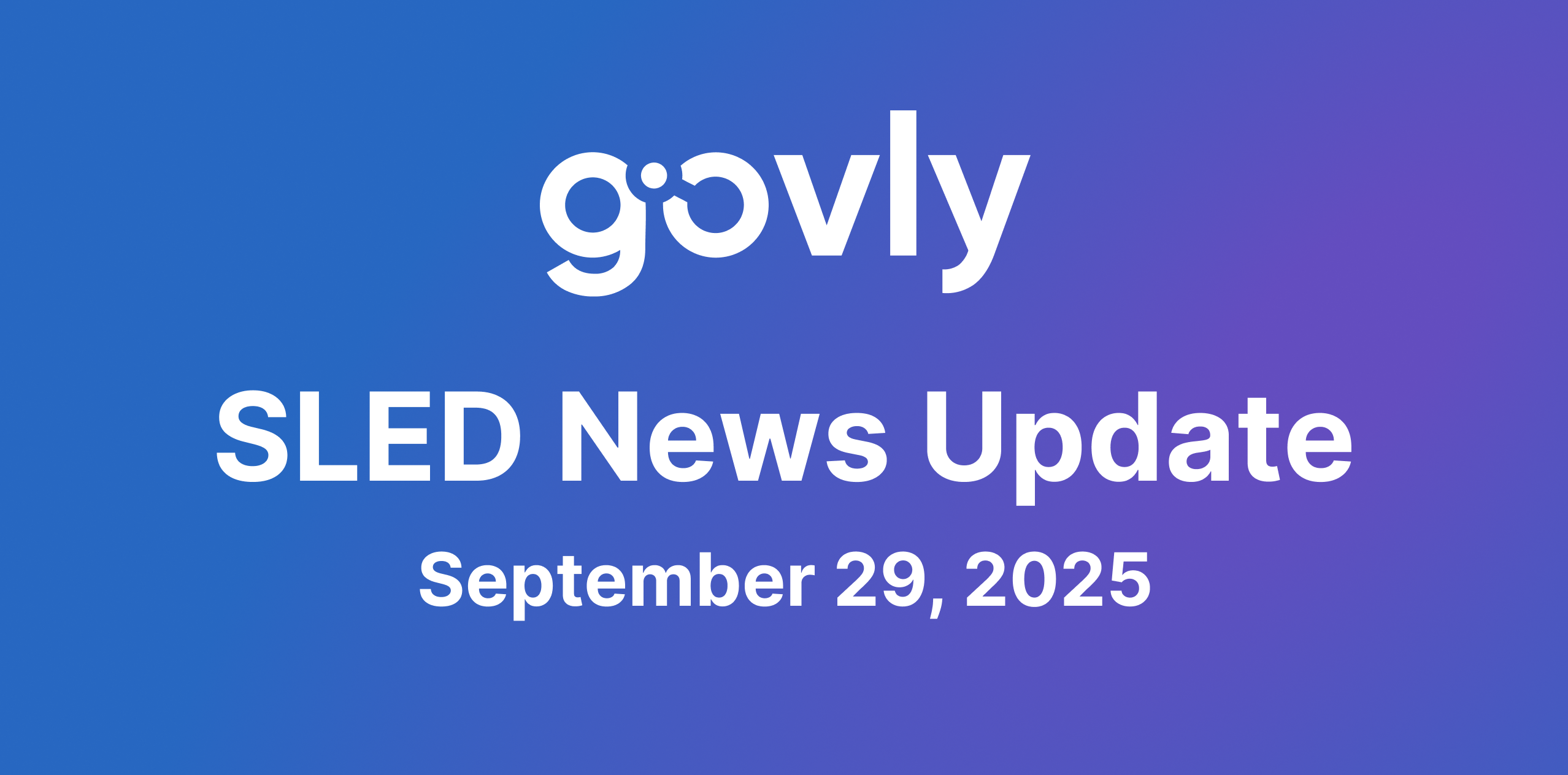Why market intelligence is so important
Market intelligence is paramount for any company looking to gain an edge over competitors. Collecting data from the right sources and analyzing it unlocks a treasure box of meaningful information to help companies make decisions regarding competitor behaviors, products, consumer trends, and market opportunities. With the right data, organizations can reduce risks, understand market demands and consumer opinions, capture market share, collect real-time relevant data, and boost additional selling opportunities—all establishing a competitive advantage.
This is true for any competitive market, but it’s especially relevant for government contracts. In the private sector, competitor and customer data is often hidden or obscured. Contract data in the public sector is just that…public. Nearly everything you could want to know about a contract is publicly available—date of the original contract, date for renewals, configurations of your competitor's products, part numbers, quantities, period of performance dates, location, and the list goes on.
However, this kind of data mining can be slow and cumbersome using government contract websites. The good news is that Govly pulls all this information into its platform, allowing you to assess and search using basic search terms. All the data across all the channels you’re looking for is visible together in one single view, right at your fingertips.
Below are three ways Govly can be used to data mine market intelligence, giving you an advantage over your competitors and access to the right government customers at the right time.
See what your competitors are doing
Wouldn’t it be great if you could just click a button and see all the relevant data about what your competitors are doing, who they’re selling to, how many products they’re selling, and when? You’d have complete visibility into what your competition is up to, allowing you to head them off at the pass. Keeping track of the competition is fundamental to the operation of any business.
In Govly, you can search for a competitor, or multiple of them, and find all their current contracts. You’ll see how old these contracts are and when they’re up for renewal. In the IT space where tech evolution outpaces the length of the contract, offering government customers who own that contract something better, faster, and more efficient for less money gives you an immediate competitive advantage.
For instance, let’s say you’re a technology company that sells large technology and data center solutions, configurations, installs, etc. You’d be able to gain visibility into everything within the original RFQ—how many controllers, drive trays, individual drives, length of the contract, pricing info, and more. With this knowledge, you can compete against it with your solution, tailoring a better configuration at a more competitive price. You have the government customer information listed in the contract, so you know exactly who your prime partner should contact to offer your solution.

Research complementary products
For many companies, especially in the technology sector, the best business strategy isn’t to go after the competition head-on, but instead to find ways to be complementary in the space. The competitive advantage here isn’t about replacing someone else’s product, but enhancing or augmenting it. This kind of mutual growth technique exists all throughout nature, where you have creatures working together symbiotically to reach a common goal. Cleaner fish scrub the teeth of bigger fish on the reef. The little workers get sustenance while the bigger fish gain proper dental hygiene.
With complementary products, this symbiosis can run across a spectrum. There are complementary goods that, when used alone, have little or no value, such as tennis balls and rackets or computers and keyboards. There are others, though, that run sufficiently on their own but greatly enhance the other when used in tandem. Take AI and IoT. The full power of IoT is unlocked when data is collected and managed through AI. For instance, IoT consumer devices and industrial machinery can signal their environment and be remotely monitored, and controlled. This is powerful on its own, but add in AI, and the machines can use the data collected through IoT to make decisions without the need for human intervention.
Knowing where your products, goods, and services can be complementary in the market can give you a huge advantage in generating primary or secondary revenue streams. Once you understand where you may be complementary in the market, you can use Govly to search industry-specific terms, or even specific products you know you can be complementary with.
For instance, there are companies that sell products with the specific intent of making a product already on the market better. If you’ve ever used out-of-the-box HR software, you’d know that it’s not always ready “out-of-the-box” the way you need it to be. The same goes for the millions of government employees trying to navigate HR software that may not be as effective or efficient as they’d like it to be. There are companies whose products sit on top of the HR software and enhance it, so that the experience is much better for the user. This is a really obvious example, but there may be ways your products can be complementary to other products the government is already using. Govly gives you access to find those complementary solutions and who to contact.
Find the Primes
We talk a lot about the importance of Primes in our blogs. It may seem like overkill, but trust me when I say that it’s important enough to your overall success in finding and landing government contracts, that we bring it up all the time. For those unfamiliar, a Federal Government Prime Contractor is a company that works or sells directly to the government . They are responsible for procuring, utilizing, and managing subcontractors to ensure that the project is completed according to the stated terms in the contract.
What this means is that the Primes essentially hold the keys to the kingdom. There are a lot more hoops a company has to jump through in order to be designated as a Prime, so smaller companies, especially those with niche or industry disruptive technology solutions, will have a much harder time becoming a Prime contractor themselves. However, this is often to the advantage of smaller organizations who know how to take advantage of it.

For instance, if there’s a contract for a school, it may include physical goods like desks, chairs, and school supplies, as well as technology like computers and software. The Prime takes on the full contract, but it’s unlikely they’ll be able to fulfill all of the orders within such a broad contract. Companies can use Govly to look up contract information using industry keywords that will show relevant contract opportunities AND the primes they should work through to submit a bid.
This is, like the section above, a symbiotic relationship. Both the Prime and the subcontractor benefit from the relationship. Everybody wins.
About Govly
Suppose you are a technology company that’s interested in selling to the U.S. Government, or a technology company that’s already selling to the government. In either case, the Govly application and leadership team are prepared to help you accelerate your business. We help businesses that want to sell to the U.S. Government by providing the insights and access to partnerships needed to do so, and assist businesses that already sell to the government by centralizing and filtering public and private opportunities into a single location that fosters B2B collaboration across the supply chain.
We’d love to talk to you.
About the author
Jon Wright is the Co-Founder of Govly and Co-Founder of Blazar Technology Solutions. He has an MBA from the University of Colorado, Denver and has held multiple roles in the government contracting space including project manager of multiple GWACS, VP of Sales and Director of Sales Ops. He loves working directly with companies looking to land government contracts because he enjoys solving business challenges.


.png)




.png)